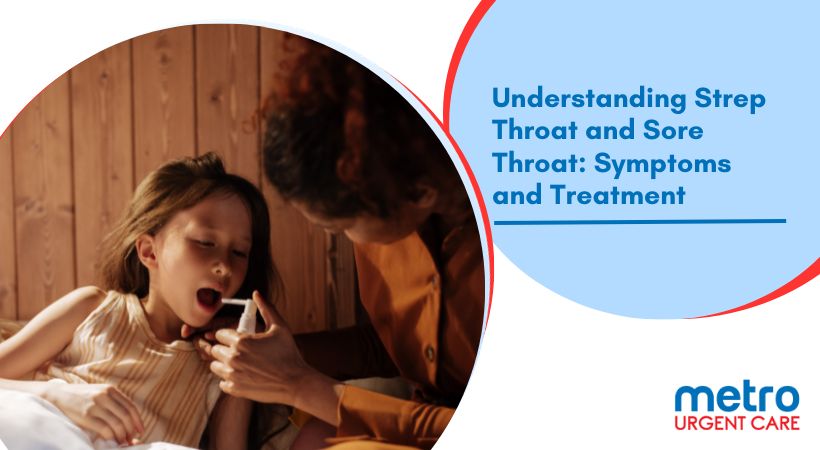


While sore throat and strep throat can cause discomfort and pain in the throat, they are two different conditions requiring different treatment approaches. Understanding the differences, their causes, and symptoms allows you to seek proper medical attention, obtain faster relief, and improve overall health.
Let us explore the key differences between both conditions to ensure accurate diagnosis and appropriate treatment.
A sore throat (pharyngitis) is a scratchy or burning feeling in the back of your throat that may hurt when you swallow or talk.
Strep throat is an infection in your tonsils (the lymph nodes in the back of your throat) and throat, causing your tonsils to swell, resulting in a sore throat.
Some distinctions between a sore and strep throat include:
Strep throat is caused by a group of streptococcus bacteria. Infected people can transmit the bacteria to others by coughing, talking, sneezing, and sharing utensils.
A sore throat can cause:
Common symptoms of strep throat include:
A sore throat can be a sign of strep throat. Then, how do we differentiate whether it is a common sore throat or caused by a bacterium? Let’s answer that question.
A common sore throat begins with a hoarse feeling in your throat, like if your throat as if your throat is dry or on fire. It may cause intense pain in your throat when you talk or swallow. Besides, you may also experience pain in your ears or down the side of your neck. A sore throat caused by viral infections tends to improve within some days with rest and home remedies.
Contrarily, if a strep infection causes a sore throat, you will have:
A strep throat will cause your tonsils to swell and inflame, turning them into a deeper color than the surrounding tissue. You may notice the small red spots or streaks on your throat and mouth roof.
Along with the redness in the back of your throat, a strep infection may cause white streaks, spots, or blotches on your tonsils. In such cases, you may require a strep test to confirm what type of bacteria has caused your strep throat.
A strep throat treatment regimen includes antibiotics, such as amoxicillin and penicillin. Your doctor may prescribe these in injection, liquid, or tablet form for 10 or more days, depending on the severity of your infection.
You can protect yourself from contracting strep throat and infecting others by:
While sore throat and strep throat may share similar symptoms, underlying causes and treatment methods vary. So, it is crucial to understand the difference between the two for appropriate treatment and care.
Whether it is a sore throat or strep throat, Metro Urgent Care ensures prompt intervention and personalized care. With our immediate attention and assistance, we can assure you a speedy recovery from your symptoms while preventing potential complications that stem from untreated strep throat. Schedule an appointment today to get rid of throat troubles quickly.
Source: CDC